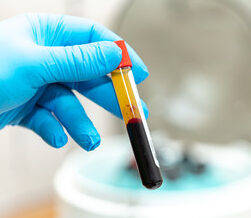Did you know that the body has the ability to heal itself? Well, thanks to Platelet-rich plasma therapy, a form of regenerative medicine, that enables the body to harness those abilities by stimulating the natural factors the body needs to heal tissues. But before we dive into the technicalities, perhaps we should identify the difference between Plasma and Platelets.
Plasma is the liquid part of the blood and it is composed of water and proteins. It is the medium through which red blood cells, white blood cells, and platelets circulate through the body. On the other hand, platelets or thrombocytes are blood cells responsible for blood clots, among other necessary growth healing functions.
So, what is platelet-rich plasma (PRP) therapy?
This is a technique where an individual’s own healing system is used to solve their own musculoskeletal problems. An injection that is concentrated with the patient’s own platelets is used to accelerate the healing process of the patient’s injured ligaments, tendons, joints, and muscles.
Perhaps you are wondering how such injections are prepared. Well, the patient’s blood is drawn and placed into a few tubes where the platelets will be concentrated by running the blood through a centrifuge. These concentrated platelets are then directly injected into the damaged or injured body tissue to release growth factors responsible for stimulating and increasing the number of reparative cells. Usually, the injection is guided by ultrasound imaging.
What are the uses of PRP injections?
Research has found PRP therapy to have significant benefits to the body’s healing process, especially for soft-tissue injuries, and pain reduction in people with tendonitis conditions such as golfer’s elbow tennis elbow. Nevertheless, PRP is used applied across several applications, this includes;
1. Postsurgical repairs; where doctors use PRP injections to repair torn tendons and ligaments after a surgical procedure.
2. Osteoarthritis; where PRP injections in the knee have shown more efficiency in people with osteoarthritis compared to hyaluronic acid which was the traditional therapy for osteoarthritis. Take note that this is not conclusive and more trials are underway.
3. Loss of hair: where doctors use PRP injection on the patient’s scalp to promote hair growth. In 2014, research proved that PRP injections are effective in the treatment of androgenic alopecia, also commonly known as male pattern baldness.
4. Tendon injuries: where doctors use PRP mostly to treat chronic tendon problems such as Achilles tendonitis at the ankle. This explains the rising number of athletes using PRP injections in the treatment of sports injuries. Notably, PRP has been used by many well-known athletes, like golfer Tiger Woods and tennis player Rafael Nadal, for a variety of ailments, including fractured elbows and severe muscle strains.
Take note that not all these uses have not yet been proven to provide results, others are still in trial stages.
What are the benefits of using PRP therapy over other medical procedures?
Since the PRP injections are prepared from the patient’s own blood, there are limited side effects to this procedure because the body is less likely to reject or react negatively to them. Furthermore, PRP therapy reduces the need to use stronger pain medications such as opioids whose side effects may be severe.
Despite being a popular therapy in dermatology and sports science, is PRP still a controversial treatment?
As of today, PRP therapy has only been approved for use in bone graft treatments by the Food and Drug Administration (FDA). However, doctors have used the therapy to address other health issues such as promoting hair growth, reducing the symptoms of arthritis, and promoting muscle healing. Despite its benefits, other medical professionals such as the American College of Rheumatology (ACR) oppose the use of PRP outside its approved medical use. Also, the Arthritis Foundation is strongly against the use of PRP therapy in the treatment of osteoarthritis.
Well, PRP therapy seems to be promising even though there is not sufficient research to back it back up at the moment. Although it appears to be effective in the treatment of certain tendon conditions, the medical fraternity is still in need of more scientific evidence to approve its use in other health conditions. Nevertheless, the risks associated with PRP therapy are minimal even though its success is still questionable. Anyone considering PRP therapy should check his or her eligibility with a medical physician and health insurance carrier.

